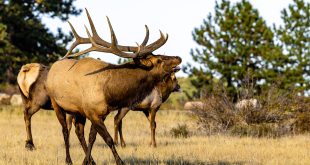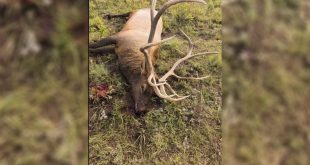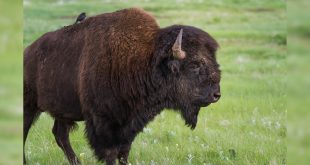
Across much of the western portions of the Colorado Rockies, and especially the northwest corner of Colorado, this winter’s snowfall is significantly above average … and winter isn’t over yet. The National Weather Service’s Maybell weather station has recorded over 80 inches of snow for the area and it’s just as bad, and in many cases worse, in most of Wyoming.
Colorado Parks and Wildlife, Northwest Region Public Information Officer, Rachael Gonzales just posted an article stating, “…prolonged snow combined with strong gusty winds have made an already hard time of year for wildlife even more difficult. Food has been extremely difficult for big game to find as much of it is covered by deep, hard-packed snow. This has forced thousands of animals to migrate farther west than they typically do, burning much-needed fat and calories they likely won’t replenish.”
“It’s tough,” said Assistant Area Wildlife Manager Mike Swaro. “There’s no other way to describe it. We typically see some mortality from starvation every winter. That’s just nature, not every animal survives. This year it feels like all we’re seeing is starving or dying animals.”
This winter has been very tough for big game in the Bears Ears and White River deer and elk herds, and exceptionally tough for the Great Divide pronghorn herds. In an area known for some of the largest elk herds in the nation, severe winter conditions have resulted in high elk calf mortality and above-average cow mortality. For deer, the combination of severe winter conditions and high prevalence of chronic wasting disease has affected the resiliency of this population. Over the past several years, biologists have observed a decrease in population and the sex ratio has fallen below the objective set in the Deer Herd Management Plan.
Pronghorn are seeing severe impacts this winter and significant mortality is being observed from aerial and on-the-ground observations. With extreme winter conditions persisting through March, pronghorn mortality continues to increase. Poor winter habitat conditions and little to no food sources have led to higher-than-normal mortality rates.
The silver lining is this winter has not had severe, below zero, temperatures to go along with the deep snow. And come spring, with a snowpack 143% above average, natural springs that have run dry in recent years will more than likely have water once again. This should provide some improvement to drought conditions those areas have experienced over the past 10 years.
For now, we have to wait and see what Mother Nature has in store for the next month or so. Additional large snowfalls in April would hit all of Colorado’s wildlife especially hard.
Each year at his time, wildlife officials set big game license numbers. While doing their best to anticipate additional losses throughout the spring, biologists are taking conservative approaches with this year’s license recommendations. They are recommending significant reductions, in some cases over 40%, in the number of licenses for elk and deer in the Northwest Region for the 2023 big game season. However, it is important to note, these reductions are recommendations which will be presented at the Parks and Wildlife Commission meeting in May for final approval by Parks and Wildlife Commissioners.
 Eastmans' Official Blog | Mule Deer, Antelope, Elk Hunting and Bowhunting Magazine | Eastmans' Hunting Journals
Eastmans' Official Blog | Mule Deer, Antelope, Elk Hunting and Bowhunting Magazine | Eastmans' Hunting Journals





This is a great tip particularly to those new to the blogosphere.
Simple but very accurate information. Best Home Decor Store in Mumbai